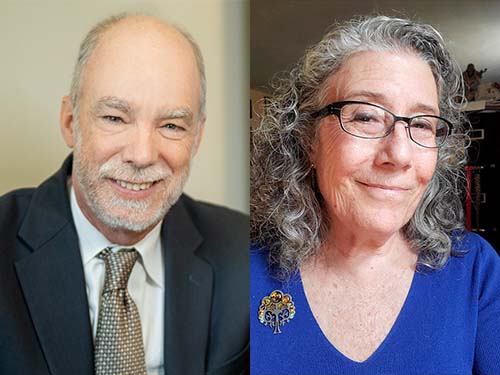
A new study by Heller authors published in Frontiers in Public Health demonstrates that the U.S. could save billions of dollars and drastically improve quality of life for millions of people with severe brain injuries by expanding access to rehabilitation services. The paper examined seven studies published between 2009 and 2019 that studied the cost-savings from accessing multi-disciplinary rehabilitation services (such as physical, cognitive and occupational therapies) after a severe brain injury. Authors Laura Lorenz, PhD’08, a visiting research scholar at the Heller School, and Michael Doonan, PhD’02, director of the MPP program, discussed their findings and policy recommendations with Heller Communications.
Tell us about your findings. How would increasing access to rehabilitation care for patients with severe acquired brain injury (sABI) improve lives and save money?
Increased access means less need for 24/7 supervision for patients with severe brain injuries, improves lives and saves money.
Our main finding was that investing in rehabilitation care will save an average of $1.5 million per person over the course of their life, mostly from a reduced need for supervision and nursing home care. Most people with brain injury prefer to be more independent and able to do more for themselves, so the cost-savings investment also contributes to better quality of life.
How widespread is sABI in the U.S., and what are the associated costs of these injuries?
In the U.S. approximately 20 million people live with disabilities from stroke or traumatic brain injury (TBI) from a blow or jolt to the head. The economic cost of TBIs in 2010 alone was estimated to be ~$76.5 billion in the U.S. The costs include $11.5 billion in direct medical costs as well as $64.8 billion in lost wages, lost productivity, and non-medical expenditures.
The U.S. does a good job at acute care, or saving lives in the emergency room, but we do not do so well with caring for the person with severe brain injuries in the medium and long term. We have an obligation to help people recover to the maximum extent possible, and given that appropriate evidence-based rehabilitation care saves money, there’s really no excuse.
How does the current U.S. approach to sABI care differ from countries with single-payer health systems, such as the UK?
The U.S. has a complex health care system with a range of private and public insurers and limited coordination across the lifespan. Payers play a dominant role in determining access to multi-disciplinary rehabilitation after a severe brain injury. Ireland and the UK, which have single-payer health systems, are examples of the lifetime model of care that supports access to multi-disciplinary rehabilitation. In the UK, the national health service has regional networks that deliver specialized rehabilitation for patients with more complex needs after brain injury and provides long-term services and supports to everyone.
In addition to increased access to rehabilitation care, what are your policy recommendations?
Our recommendations aim to “tweak” our health care system, so it ensures access to multi-disciplinary rehabilitation following a severe brain injury. Insurance companies might not provide access to these services now because they are upfront investments; cost-savings accrue over the long run and often to a different part of the health care system. We also recommend providing case management because services can be hard to access and coordinate, even with insurance. We recommend a continued focus on injury prevention and support for return-to-work. And finally, we recommend establishing a national brain injury database to inform policy decision-making around access to rehabilitation care that can make a difference for patients and families and reduce taxpayer burden.
